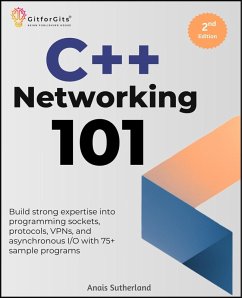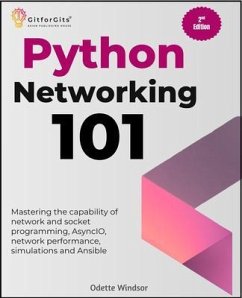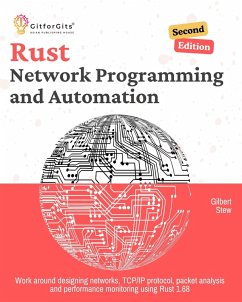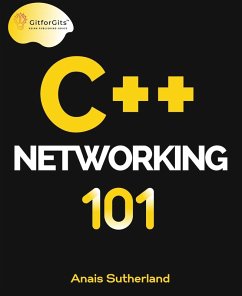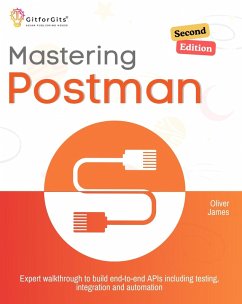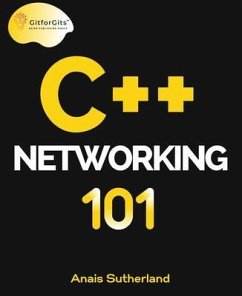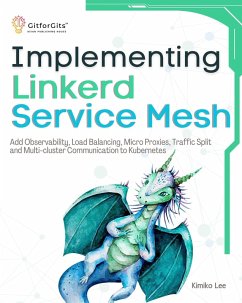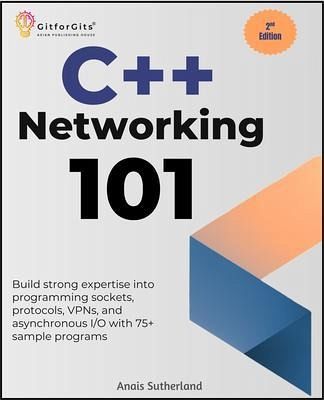
C++ Networking 101, Second Edition (eBook, ePUB)
Build strong expertise into programming sockets, protocols, VPNs, and asynchronous I/O with 75+ sample programs
Versandkostenfrei!
Sofort per Download lieferbar
29,95 €
inkl. MwSt.
Weitere Ausgaben:

PAYBACK Punkte
15 °P sammeln!
The point of this edition is to help C++ programmers get the skills and confidence they need to do a wide range of networking tasks. The book gives lots of practical, easy-to-follow examples and covers most key areas of network programming, but intentionally leaves out highly complex scenarios.It starts with the basics of how C++ works with TCP/IP and gradually builds on that as you learn to write client-server applications, configure IP addressing and subnets, implement protocols like HTTP, FTP, SMTP, IMAP, and DNS, and handle network communication errors effectively. It's packed with clear e...
The point of this edition is to help C++ programmers get the skills and confidence they need to do a wide range of networking tasks. The book gives lots of practical, easy-to-follow examples and covers most key areas of network programming, but intentionally leaves out highly complex scenarios.
It starts with the basics of how C++ works with TCP/IP and gradually builds on that as you learn to write client-server applications, configure IP addressing and subnets, implement protocols like HTTP, FTP, SMTP, IMAP, and DNS, and handle network communication errors effectively. It's packed with clear explanations and real code that works. You'll dive into VPN setups, wireless networking standards, asynchronous programming models, and network simulations, using modern C++23 features throughout. As the chapters go on, the focus moves on to getting the most out of devices and making them run smoothly. This includes using NETCONF to automate device configurations, managing firmware updates, tweaking socket behavior for better performance, setting up recovery systems, and making diagnostic tools. You'll also set up network monitoring using Nagios, along with custom C++ checks to track faults, performance metrics, and security events in real time. After finishing, you'll be able to think and work like a network programmer and administrator, and you'll be ready to use your skills in real-world situations.
Key Features
Build strong foundations in TCP/IP networking using modern C++ coding examples.
Work on client-server applications with TCP and UDP sockets, and get to know real-world communication patterns.
Get hands-on with IP addressing, subnets, and routing through practical demonstrations and progressive programming exercises.
Put core application protocols like HTTP, FTP, SMTP, IMAP, and DNS in C++.
Take advantage of NETCONF and C++ to automate configuration tasks across network devices efficiently and consistently.
Employ asynchronous programming, multithreading, and event-driven models to handle high-performance networking scenarios.
Program your devices to automatically update their firmware, adjust their settings, and recover if something goes wrong.
Combine Nagios monitoring with custom C++ checks for fault, performance, and security visibility.
Simulate and test networks using NS-3 and diagnostic tools for real-time problem solving.
Table of Content
Introduction to Networking and C++
Understanding TCP and UDP
Network Interfaces and Addressing
Application Layer Protocols
VPNs
Wireless Networks
Asynchronous Programming
Network Testing and Simulation
Network Configuration Management
Network Monitoring
It starts with the basics of how C++ works with TCP/IP and gradually builds on that as you learn to write client-server applications, configure IP addressing and subnets, implement protocols like HTTP, FTP, SMTP, IMAP, and DNS, and handle network communication errors effectively. It's packed with clear explanations and real code that works. You'll dive into VPN setups, wireless networking standards, asynchronous programming models, and network simulations, using modern C++23 features throughout. As the chapters go on, the focus moves on to getting the most out of devices and making them run smoothly. This includes using NETCONF to automate device configurations, managing firmware updates, tweaking socket behavior for better performance, setting up recovery systems, and making diagnostic tools. You'll also set up network monitoring using Nagios, along with custom C++ checks to track faults, performance metrics, and security events in real time. After finishing, you'll be able to think and work like a network programmer and administrator, and you'll be ready to use your skills in real-world situations.
Key Features
Build strong foundations in TCP/IP networking using modern C++ coding examples.
Work on client-server applications with TCP and UDP sockets, and get to know real-world communication patterns.
Get hands-on with IP addressing, subnets, and routing through practical demonstrations and progressive programming exercises.
Put core application protocols like HTTP, FTP, SMTP, IMAP, and DNS in C++.
Take advantage of NETCONF and C++ to automate configuration tasks across network devices efficiently and consistently.
Employ asynchronous programming, multithreading, and event-driven models to handle high-performance networking scenarios.
Program your devices to automatically update their firmware, adjust their settings, and recover if something goes wrong.
Combine Nagios monitoring with custom C++ checks for fault, performance, and security visibility.
Simulate and test networks using NS-3 and diagnostic tools for real-time problem solving.
Table of Content
Introduction to Networking and C++
Understanding TCP and UDP
Network Interfaces and Addressing
Application Layer Protocols
VPNs
Wireless Networks
Asynchronous Programming
Network Testing and Simulation
Network Configuration Management
Network Monitoring
Dieser Download kann aus rechtlichen Gründen nur mit Rechnungsadresse in A, D ausgeliefert werden.




